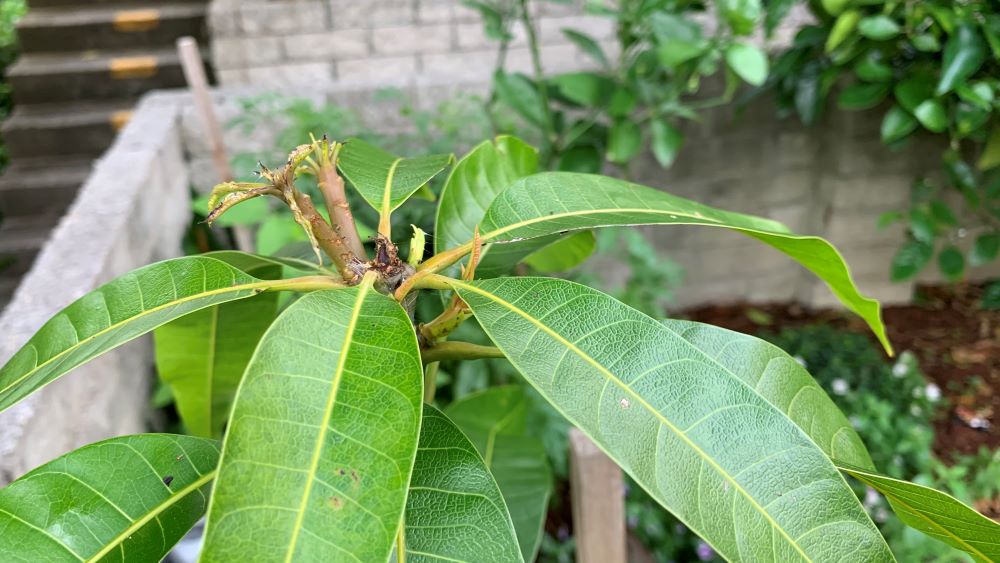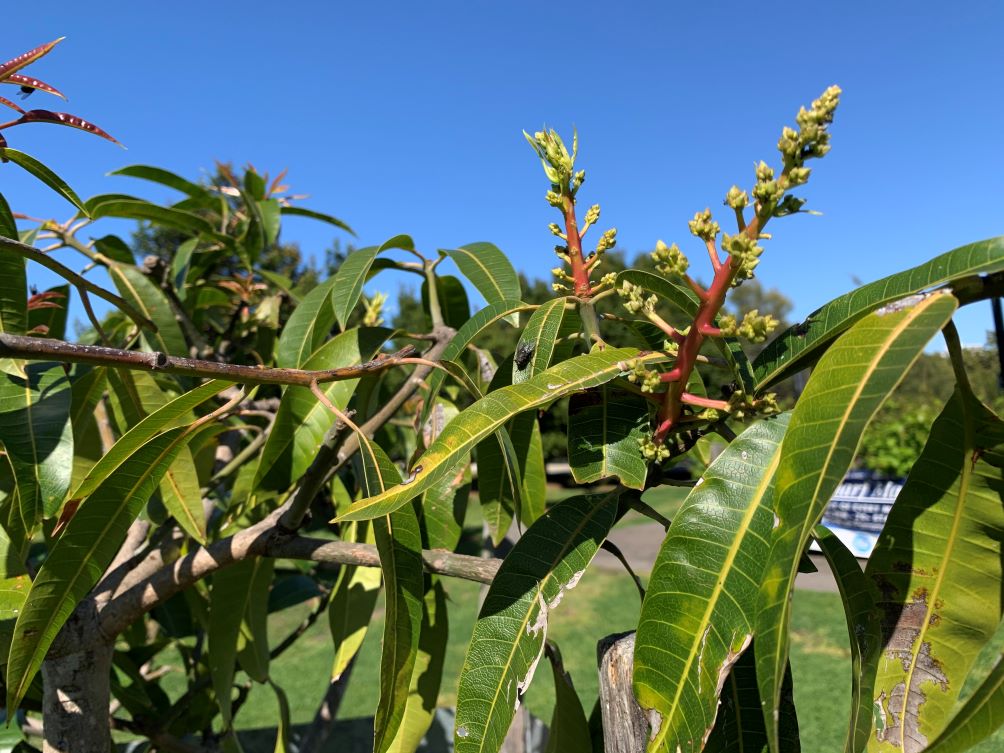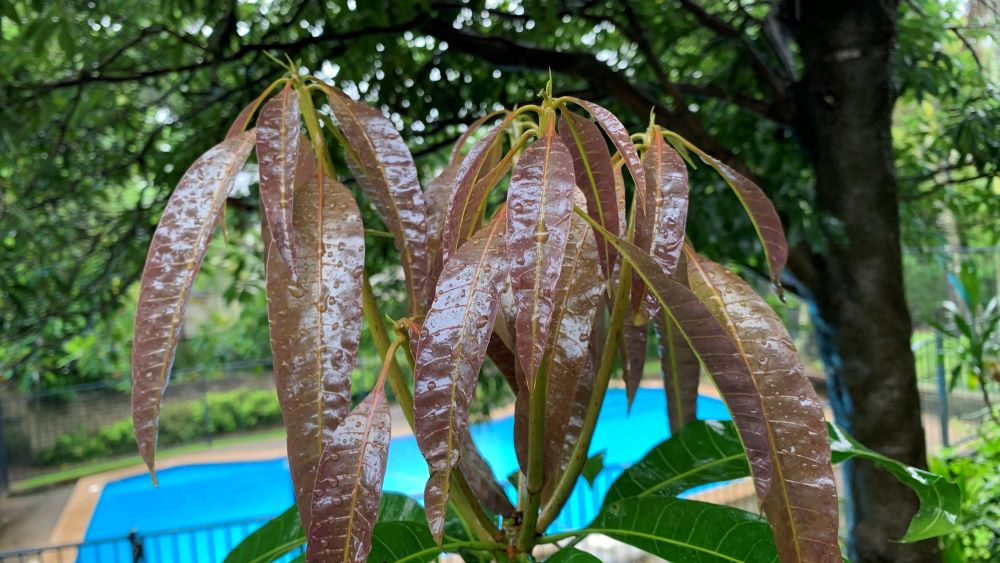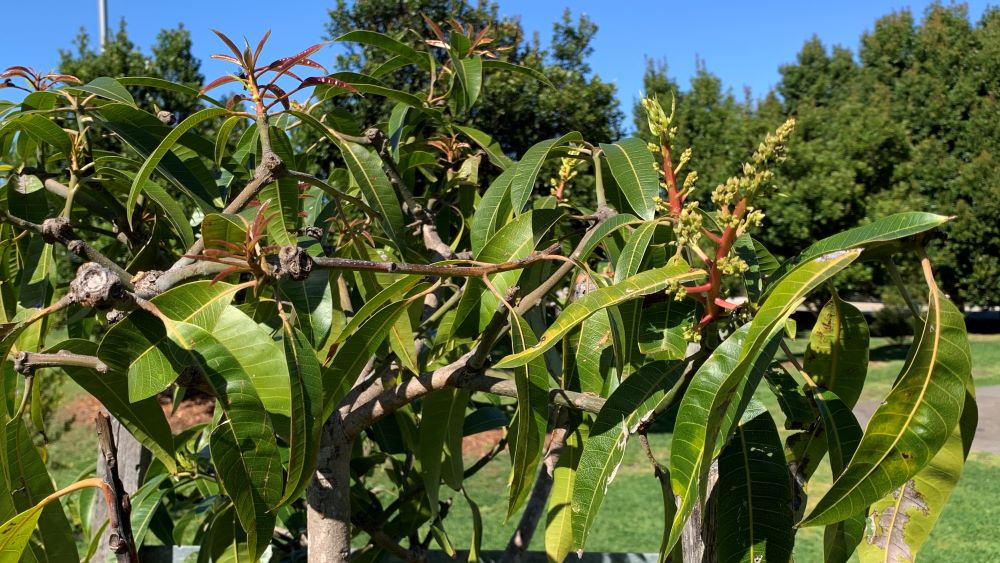Mango trees are great fruit trees for areas that get warm summers and mild winters in subtropical or even temperate regions. If your mango tree is not flowering the causes can be environmental including not enough sun, extreme weather changes, wind or temperatures below 40 degrees Fahrenheit. Pests and a lack of nutrients can also stop mango trees from flowering.
This article will explore the top causes of mango trees not flowering and what you can do to get more flowers and more fruit.

7 Reasons why a mango tree is not flowering and solutions
Here are the top reasons why a mango tree will not flower and what you can do to solve each one
1. The mango tree is getting less than 6 hours of direct sun
Mango trees that are not getting at least 6 hours of sunlight in spring and summer can fail to flower. These tropical trees need as much sun as possible to encourage them to bloom. The more sun they get the better. Plant them in an open position in your backyard and trim back overhanging trees to let the light in.
Potted mango trees can be moved into an open area in the spring. While they hate being exposed to frost, they can be protected under a verandah until the chance of frosts passes. Move them out into full sun and you will get more flowers.

2. The mango tree is too young to produce flowers
Mango trees that are less than 5 years old are not likely to flower. Seedling mango trees will take up to 8 years to grow flowers and fruit after they have been planted as a seed. Grafted mango trees can produce fruit sooner, even as early as 3 years.
If they are grafted onto an advanced root stock this will give them a head start.
If you want flowers as soon as possible choose a grafted mango tree. These will usually produce flowers within the first or second year after you plant them at home. Improve the ground soil with compost and aged cow manure to give them the best start.
Their roots hate being wet so make sure the soil has great drainage. Mound the soil up to help the water to drain through.

3. Overwatering the mango tree when flowers appear
Mango trees that are watered too much when flowers appear can drop the blooms and they won’t form fruit. While mangoes love regular water, a little water stress when the flowers appear can help the tree to keep them on.
Deep water the plant during the hot weather but allow it to dry out in between. Add a 3 inch layer of straw or bark mulch around the plant to help to regulate the water in the soil. Mature trees can handle small dry periods between watering.
Note: Young trees will need regular water in the warm weather until they establish. Once your mango has been in the ground for 2-3 years, they will be able to handle less water over summer.
4. The mango tree is getting too much nitrogen based fertilizer
Mango trees that are fed with too much high nitrogen fertilizer will produce lots of leaves but may not flower. Nitrogen will stimulate leaf growth and the plant will take advantage of the abundant conditions and keep growing.
To encourage more flowers it is important to fee the tree with a fertilizer that contains more potassium. In later spring, feed the tree with a citrus fertilizer, mango specific fertilizer or one that has a high potassium to nitrogen ratio.
This will switch the trees focus to producing flowers rather than leaves.
5. The mango tree is exposed to wind and extreme weather
Extreme weather conditions can make mango trees drop their flowers or will stop them from growing them altogether. Cold snaps in spring and temperatures that drop below 40 degrees Fahrenheit can damage new blooms.
Cold and harsh winds can also stress the plant and can stop them from growing new blooms.
If you know that a frost is coming then you can cover and protect the blooms with a hessian blanket. Use a soft, natural material to cover the flowers and remember to remove it in the morning.

Plant mango trees with other fruit trees to provide a barrier. Any protection from wind will help the blooms to stay on the tree.
6. Mango trees affected by Anthracnose (fungal disease) & Powdery mildew
Mango trees that are infected by fungus can drop their blooms. Anthracnose is a common fungal disease, spread from the soil or other plants which can infect the flower buds. Look out for black marks or dots on the blooms.
Anthracnose can be prevented and treated with a copper based fungicide.
To naturally prevent the fungus spread it is important to only water the tree at the root level. Avoid splashing soil on the leaves and stems. Surround the tree with mulch which will also help to stop soil from splashing on the leaves.
Remove any lower branches that are near the ground. This will also help to prevent fungal disease.
Powdery mildew will often appear on the leaves and stems when there has been a lot of rainfall. Trees planted in full sun are less likely to develop powdery mildew as their leaves will dry out faster.
Trim excess branches from within the canopy to help to allow more air movement.
7. Heavy pruning at the wrong time
Heavily pruning mango trees before they produce flowers will reduce blooming and can stop flowering altogether. Cutting down branches before spring can remove the ends where flowers will grow.
To avoid cutting off the branches that will produce the mango flowers, wait until the tree has finish fruiting then give it a light trim.
Avoid removing healthy limbs and aim to balance the tree rather than giving it a harsh prune. Remove any dead limbs and branches and aim for a wine glass shape.
Tips to encourage mango trees to flower
Here are the top 6 tips to encourage mango trees to flower.
- Choose a grafted tree
- Avoid overwatering when the blooms start to appear
- Use potassium, fruit promoting or citrus fertilizer
- Plant them in at least 6 hours of sun
- Avoid pruning healthy limbs before the flowers and fruit grow
- Mulch with bark or straw
- Give the plant protection from wind and frost
These tips will help your mango to grow more blooms and to keep them on.
My Mango Tree is Not Flowering | Summary
Mango trees can need some specific conditions to get them to flower. They need to be old enough, get plenty of sun, be growing in well draining soil and will need warm weather. Feed the plant with fruit promoting fertilizer to tip the balance of potassium above the nitrogen levels.
Avoid any harsh pruning before you get flowers and your tree should reward you in the next spring.
Happy growing.
I am an accredited practicing dietitian, experienced gardener and a dedicated cook. I love writing and sharing my experience so you can learn from my successes and mistakes.
